The Wonders of Foliar Spraying
Are there benefits to foliar sprays? Any cautions? Can we make the water we use with them better?

There is no denying that soil health is essential in a garden and to a plant. Soil health = plant health = soil health = plant health… and on and on. The better the soil, the better the plant; the better the plant, the more it returns to the soil. The soil is literally the house our plants reside in. It is where the plant hosts its biological guests as well. For all to be happy, the house needs to allow for air exchange, it needs to hold water, it needs to provide food for everyone, and it needs nooks and crannies where everyone can hang out.
The thing is, it takes time to build a house. Sometimes our soils are more like a dilapidated shack in a barren desert. If so, we probably do see a need for some significant improvement, and we may be working on it. But do we really want to wait 3 years before we ever grow anything? Or what if we already have a fairly decent house, it just needs a little refinement? Or, what if we’re limited to potting mixes and can’t build a long-lasting or diverse soil community?
Soil structure is the long-term solution to plant health. Plants are meant to take in nutrients primarily through their roots. However, we also see where plants can take in nutrients through dew which can contain dissolved minerals. This natural process helps us to understand why foliar feeding works and it offers us a great short-term solution to nutrient needs.
Do you remember this mineral table from our last article?
Notice how many of these needed minerals are in parts per million. 1ppm is equal to 0.0001%. How do you distribute something as minute of an amount as 0.5 ppm without getting too heavy-handed and then causing toxicities? Or having it carried by water into the soil away from the plant? The vinegar extractions mentioned many times recently are a great solution because the dilution of them is so high at 1:500 and the minerals in them are already in balanced ratios. Foliar application works perfectly to get that lower concentration as opposed to possible build-up in the soil. They also put them directly onto the plant so these traces are not lost to something else.
Why does foliar application work?
During the heat of the day, a plant’s xylem flow is going full blast. This is the flow of water and minerals from the roots up through the rest of the plant. Transpiration in the leaves is also going strong at this time to help cause water uptake from the roots. As water is released from the leaves through transpiration, it lowers the pressure. The low water pressure at the leaves causes the high water pressure at the roots to rise up throughout the plant. Regular watering wets the soil, mobilizes nutrients and bacteria, and feeds the plant through the xylem pathway.
When the sun goes down, a plant’s phloem flow picks up. This is the flow of nutrients and sugars from the leaves to plant sinks: roots, new shoots, fruits, and seeds. This flow goes directly to areas of new growth. Nutrients in the phloem flow, such as photosynthate, can move upwards or downwards and go all throughout the plant. Nutrients applied to this pathway are available within minutes or hours and so any plant problems can be addressed quickly.
If you are noticing a deficiency, using a balanced nutrient spray eliminates the guesswork of trying to figure out which mineral is needed. You don’t need to be an expert at diagnosing which particular one is required or how one mineral affects another, you don’t need to analyze all of the charts of leaf colors, you just need to recognize the signs of deficiency and then do your foliar spraying.

The phases of nutrient flow are one reason why foliar sprays are applied after sundown or very early in the morning. We want to apply those nutrients like dew, when they can sit on the leaves without evaporating off and have time to be absorbed and used by the plant.
“Foliar feeding of crops is potentially one of the most efficient and economical methods of fertilization. In the 1940s, researchers at Michigan State University, in cooperation with the Atomic Energy Commission, found that foliar feeding of plants was 8 to 20 times more efficient than root feeding.” — Dr. Arden B. Anderson, Science In Agriculture
The xylem system mostly transports ionic minerals from the soil including anions of nitrogen, sulfur, phosphorus , chlorine, and cations of nitrogen, calcium, magnesium, potassium, manganese, sodium, and zinc. It also carries the metalloids boron and silicon, mostly in the forms of B(OH)3 and Si(OH)4.
The phloem system has high mobility for potassium, magnesium, phosphorus, sulfur, nitrogen, sodium, and chlorine; intermediate mobility for iron, zinc, copper, boron, and molybdenum; and low mobility for calcium and manganese. One reason for the variance in transporation is that some minerals are heavier than others. This helps to give us an idea of which are better applied to the soil and which are better for foliar spraying. So a vinegar extraction for calcium may be more beneficial as a soil drench than a foliar spray since the primary distribution of calcium is through the roots and the xylem pathway. Though certainly a foliar spray still provides some benefit as a particular amount will be absorbed in the local area and it contains other minerals as well.
The other catch about foliar spraying is that a plant may become accustomed to receiving nutrients in this way. The more you do it, the more you may want to continue with it in a season to ensure there aren’t any slowdowns in growth or fruit production should you suddenly stop.
Other benefits of foliar feeding
Mitigating heat stress:
Another benefit of foliar spraying is that it can help to mitigate heat stress in plants. If you know a heat wave is coming your way, you can apply nutrients, sugars, proteins, or sometimes even oils proactively as a preventative, during, and after the heat stress. Aloe vera and seaweed extracts are really good for this as well. Giving plants that surplus of energy can help them to recover and lessen any negative effects.
Increase photosynthetic efficiency:
Supposedly, the photosynthetic engine of most crops is only running at 15%-20% efficiency. (Charles Tsai, et al.) It makes sense to increase this if we can. This means thicker and wider leaves with more chlorophyll and chloroplasts — or in other words, by increasing photosynthesis, we are installing larger and more efficient solar panels on our plants. Doing so means sugars are able to be converted into their reduced forms adding electrons to the soil and facilitating the reduction and uptake of minerals from the root zone. The key nutrients to increase photosynthesis are nitrogen, manganese, iron, magnesium and phosphorus.
When a good foliar spray is applied, the spike in photosynthesis can be observed in sap sugar content and dissolved solids, or Brix. According to John Kempf, “After a successful foliar application, the photosynthetic rate will gradually drop back down, but not quite down to the previous baseline. With each successive application spike, and return to baseline, the baseline level increases. When photosynthetic efficiency baseline improves to a high enough plateau plants contribute more carbon energy to the soil than they withdraw, mineral energy and the entire ecosystem becomes self-sustaining.
“The drop back to the new baseline can occur quickly or slowly, depending on the level of ecosystem health. In a compromised and degraded ecosystem, the spike may last for as little as 3-5 days before it drops back down. In a healthy soil, with good biology, the elevated spike may last for as long as 5-6 weeks or even longer.
“The healthier soils and plants become, the fewer foliars are needed until the point is reached where they are completely unnecessary to sustain a level of health where plants are completely resistant to diseases and insects.
“While on the pathway to this point, we can still use the photosynthetic efficiency spikes to produce interesting and valuable effects. If we have the presence of larval or sucking insects, a spike in photosynthesis is often successful in giving them a dose of sugar they can’t tolerate.”
Nutrient absorption efficiency is high:
According to one report, “this is the most efficient method of applying fertilizer to plants that we have yet discovered. If we apply these materials to the leaves in soluble forms, as much as 95 percent of what is applied may be used by the plant. If we apply a similar amount to the soil, we find about 10 percent of it to be used.”
Again, the reason for the increased absorption is because the nutrients are being directly applied to the plant as opposed to being distributed throughout the soil or watered out of pots with a smaller holding capacity.
If you have less than ideal soil or obvious signs of nutrient deficiency, foliar spraying is the fastest and most efficient way of getting nutrients into a plant. The right spray can also help to quickly divert a pest from bothering your plant by changing the voltage, acidity, and sugars within minutes. (The amount of effect depends on the baseline you are starting at.) Foliar spraying helps to build up inner plant fortitude.
How and what to apply…
The benefits mentioned thus far make foliar spraying very worthwhile in my mind. It’s encouraged to develop a regular schedule of it, whether that’s once a week, every other week, or once a month, etc. Though obviously, the more often it is done, the more benefit there should be, depending on the products used. If you have a serious deficiency or pest issue affecting your plant, you may choose to spray every 3-5 days to help boost the plant out of that state. Then revert to a normal schedule once managed.
Rainwater, distilled, or reverse osmosis water is typically recommended for foliar sprays to ensure proper absorption of nutrients and to not leave mineral buildup on leaves. Their lower pH is also better for foliar spraying. Unchlorinated water* is always best no question. The small openings in leaves that absorb the nutrients are called “stoma”. Most stomata are on the underside of leaves, so be sure to spray underneath leaves as well. Because they are so tiny, fine mists, or even foggers if so inclined, are best as opposed to larger water droplets. At least think a spray bottle versus a blast from the hose.
(*If you have chlorinated water, leaving small amounts uncovered outside for 24 hours can help much of the chlorine to evaporate off. Humic acid can also help to bind the chlorine. Both chlorine and hard water can affect calcium availability and the viability of the products used.)
Spray late afternoon/early evening or very early in the morning. Do not spray when photosynthesis is taking place (see timeline above) because the plant will not absorb very much and you can burn the leaves with sun exposure on some products.
If you are someone who wants to know if your work is having an effect besides the usual visual cues, you can check the efficacy of your foliar spraying with a Brix refractometer. Generally speaking, a good foliar spray should cause leaf Brix to go up by at least two full points 30-60 minutes after spraying according to Arden Anderson. If the Brix reading remains unchanged or drops, the spray is undesirable for that particular day for that particular plant. It is not necessarily a reflection on the product quality, but rather the plant’s need at that given time. There are some other details about leaf Brix readings and what causes variances which you can read more about in this article.
Very many plant fertilizers and products can be applied as a foliar spray, follow the dilution rates for foliar spraying. If none are given, I usually use 1/4-1/2 of the soil application rate.
This list is just a few of my personal favorites:
Lactic Acid Bacteria Serum (LABS) (microbial inoculant and nutrients)
EM-1 (microbial inoculant and nutrients)
Raw whole milk (microbial inoculant and nutrients)
Vinegar extracts of minerals (nutrients)
Fish Amino Acids (nutrients)
Seaweed extract (nutrients and growth/root stimulant & regulator)
Humic/Fulvic acids (chelator and nutrients)
Fermented Plant Juice (FPJ) (nutrients)
Unsulphured blackstrap molasses (chelator and nutrients, helps to maintain high Brix levels)
Aloe Vera (enzymes and protectant)
(Everything should be diluted with good water at proper ratios, nothing is applied straight.)
There are probably more that I am forgetting about at the moment, but these are enough to get you started. I usually rotate what I spray, unless there is a particular need, and I often will combine a few products together into one spray. A huge consideration for me is choosing things that keep everything in the right Eh-pH direction, and that is reflected in the above. I do prefer things that are not stinky for foliar sprays because there always seems to be a breeze that comes along blowing it all in my face at some point when I am spraying. (I often end up smelling a bit like fish if I am not careful. 😣) Which reminds me, don’t do it on a windy day! But I will use the stinkier inputs when they seem applicable.
A few more tips:
💦 Both humic acid and molasses can act as chelating agents for minerals in your sprays in addition to their own benefits.
💦 The organo-sulfur compounds in fresh garlic or garlic scapes can help to facilitate constituent passage through the waxy leaf cuticle according to Michael Phillips, organic orchardist extraordinaire. So that is something to consider if you wish to add it.
💦 You may wish to stop spraying fish products or other high-nitrogen sources by the end of spring/ early summer as they can delay hardening-off in fruit trees.
💦 Other things can be foliar sprayed for pest prevention such as liquid from simmered herbs, garlic, and chilis, essential oils, or neem oil. Whole milk is known to help with powdery mildew and spider mites, amongst other benefits. Activated EM-1 and LABS can help with fungal issues as well as nutrient absorption.
💦 If you are interested in using fermented plant extracts (FPE) but do not wish to make your own, buildasoil.com sells a line of FPE that I really like. These also work well in foliar sprays. Some of my favorites are the horsetail, nettle, and comfrey since I don’t have these growing in my area and these plants are chockful of nutrients.
💦 Yucca extract, soapnut liquid, or AgSil 16H can be used as emulsifying agents instead of liquid soap if desired. AgSil 16H contains 32% soluble potassium and 24% soluble silicon, so keep this in mind as you choose your nutrients. Soapnuts have antifungal and pest-preventative qualities. Soapnuts also are more acidic which can be good for Eh-pH ranges in comparison to soap which can be quite alkaline.
An all-purpose SPRING foliar spray adapted from Michael Phillips, “The Holistic Orchard”:
Makes 4 gallons
Mix 4 tablespoons pure cold-pressed neem oil with a generous teaspoonful of liquid soap, such as castille or dish soap. (You must mix the soap with the neem before adding the rest of the ingredients.)
4 oz of liquid fish fertilizer or fish hydrolysate*, such as Organic Gem or Neptune’s Harvest. (Do not use fish emulsion or powdered fish.)
3 Tablespoons of EM-1*
3 Tablespoons of blackstrap molasses
5 Tablespoons of liquid kelp or 3 teaspoons dry seaweed extract
Add in good water to make 4 gallons of spray and stir well to incorporate. It may help to add in small amounts of water first and mix well before adding in the rest so that the ingredients disperse and homogenize properly.
(* A like spray can be made using 1-2 Tbs Fish Amino Acids and 3 Tbs LABS if you wish to minimize purchased products.)
Spray final mixture onto all parts of the tree, including leaves, trunk, branches, and fruitlets.
This is meant to be sprayed in approximately four periods during spring from the moment trees wake up and start leafing out to fruit set and growth to prevent insects or disease that may affect young fruits.
Do not apply anything with neem oil or fish directly on open blossoms on fruit trees because of the fatty oils. It’s fine before blossoms open and after petal fall — just in case you grow fruits other than figs. Those with the fig wasp may also wish to watch applications of neem around pollination time, however, it may be an effective detractor to the black fig fly as neem is an ovipositing deterrent and prevents exposed larvae from being able to mature.
How can magnets make your foliar sprays better?
When applying foliar sprays, a wetting agent or surfactant is often used so that the water spreads on the leaf and doesn’t just bead up and roll off. However, I am experimenting with a method recommended by Nigel Palmer that involves structuring the water instead of using something like soap. It’s not as complicated as it may sound. It simply involves the use of strong rare earth magnets attached to the outside of my mixing bucket and spinning the water into a vortex with a stick several times in different directions, clockwise and counterclockwise. No, this is not woo-woo stuff 😉 and there are actually papers written about magnets affecting the structure of water.
The minerals in the amendments I have written about are in ionic forms meaning they are charged particles. When a charged particle moves through a magnetic field, that field adds energy to the particle. The vortex causes the water molecules to move at different rates of speed. The different speed of the molecules causes a shearing effect resulting in good mixing and added energy. All of this added energy causes structured water, which means the water becomes more stable, surface tension is reduced, and viscosity is increased. The structural changes of the water act as a kind of wetting agent.
The vortexing organizes the water into structured molecules with reduced random vibratory motion. This results in a lower measured temperature by a few tenths Fahrenheit and that is an indication the water has been structured. The effects of this can last for approximately 3 hours or so.
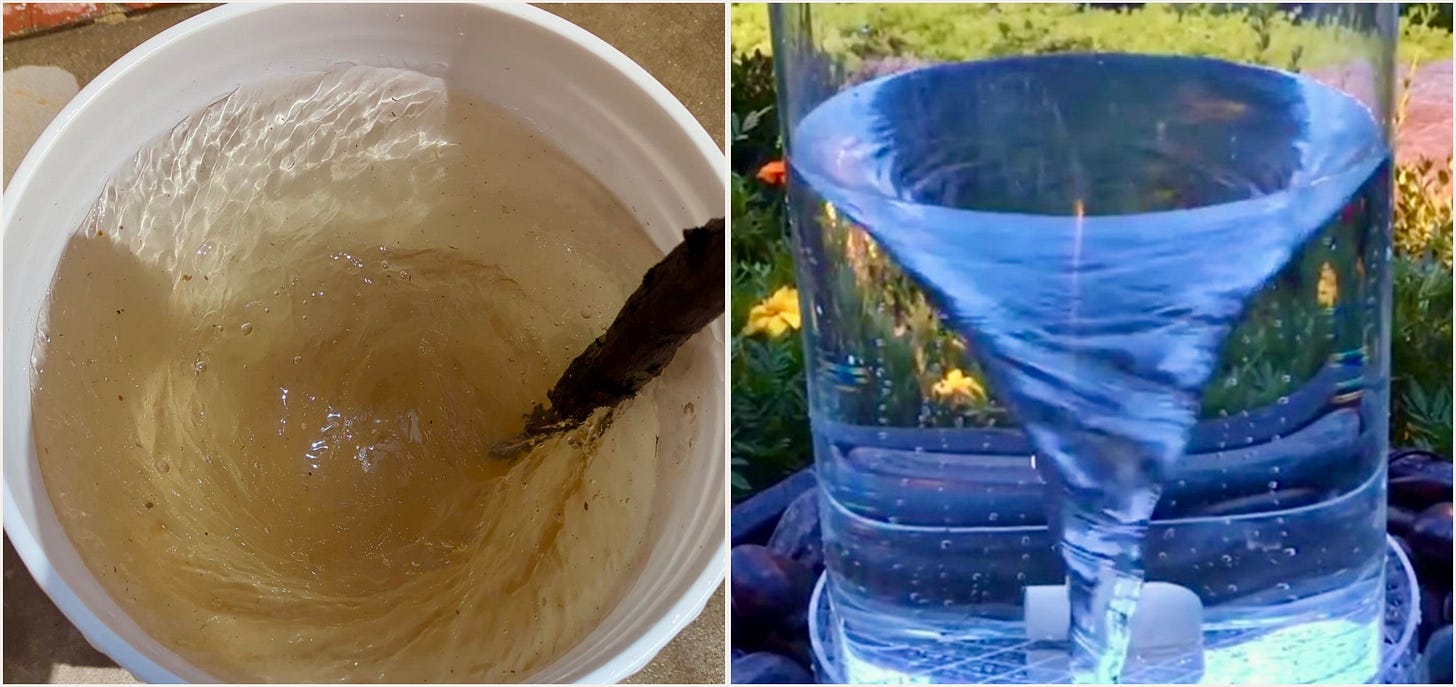
So far, this has worked incredibly well and I am impressed. Even with my hard water, this has had a very nice effect. (I do not recommend hard water if you can help it—the others are way better!) I really like not using a soap, detergent, or something else since they themselves can burn leaves if the amount is too high and it preserves the protective lipid layer on leaves. This is not a substitute when using oils though, like neem, you still will need an emulsifier with them.
Structured water is also supposed to boost plant growth and health, so an added benefit! … (Do you think that still works if I’m chanting “death to the black fig fly” while stirring? Hmm… 🤭)



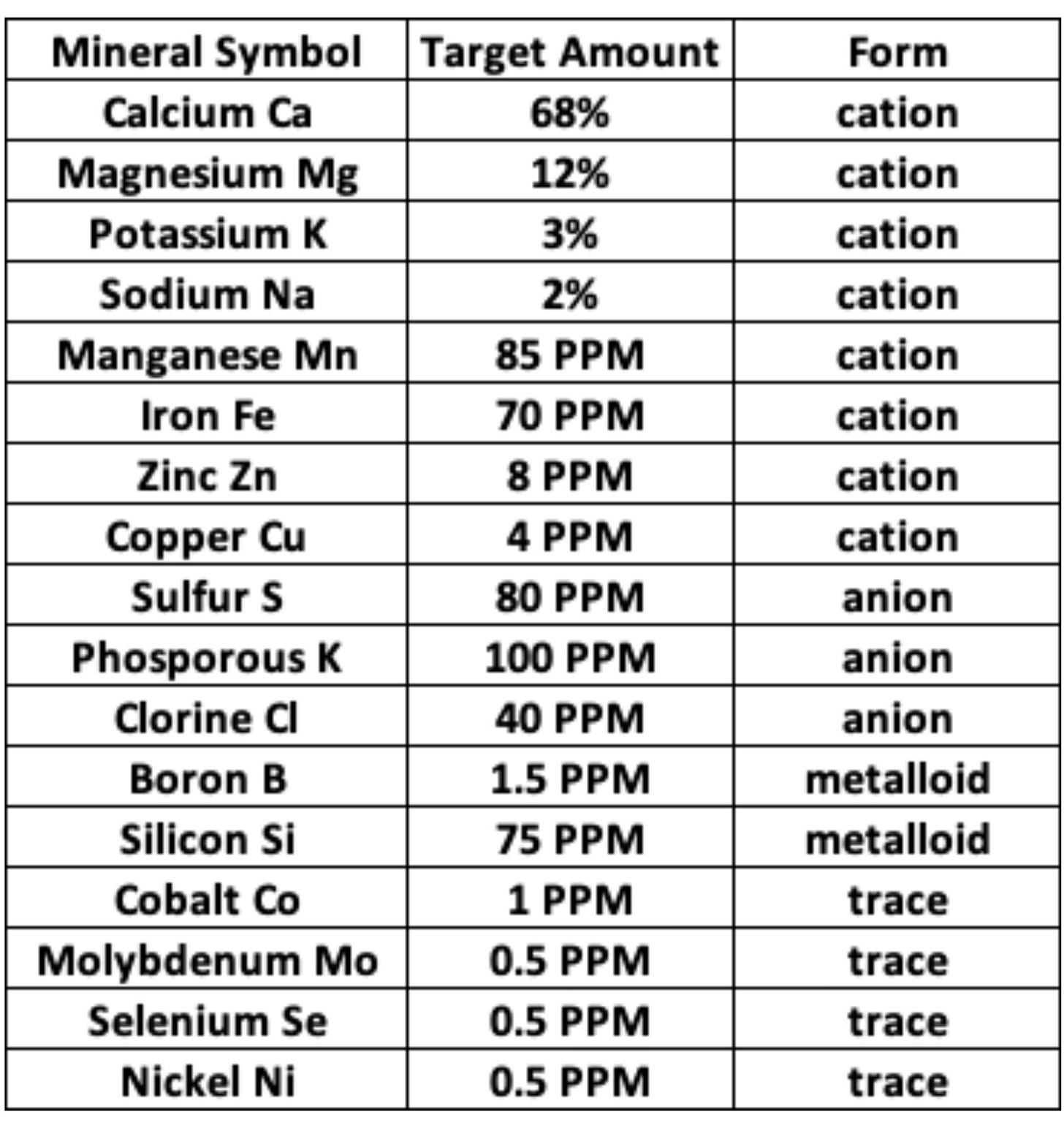
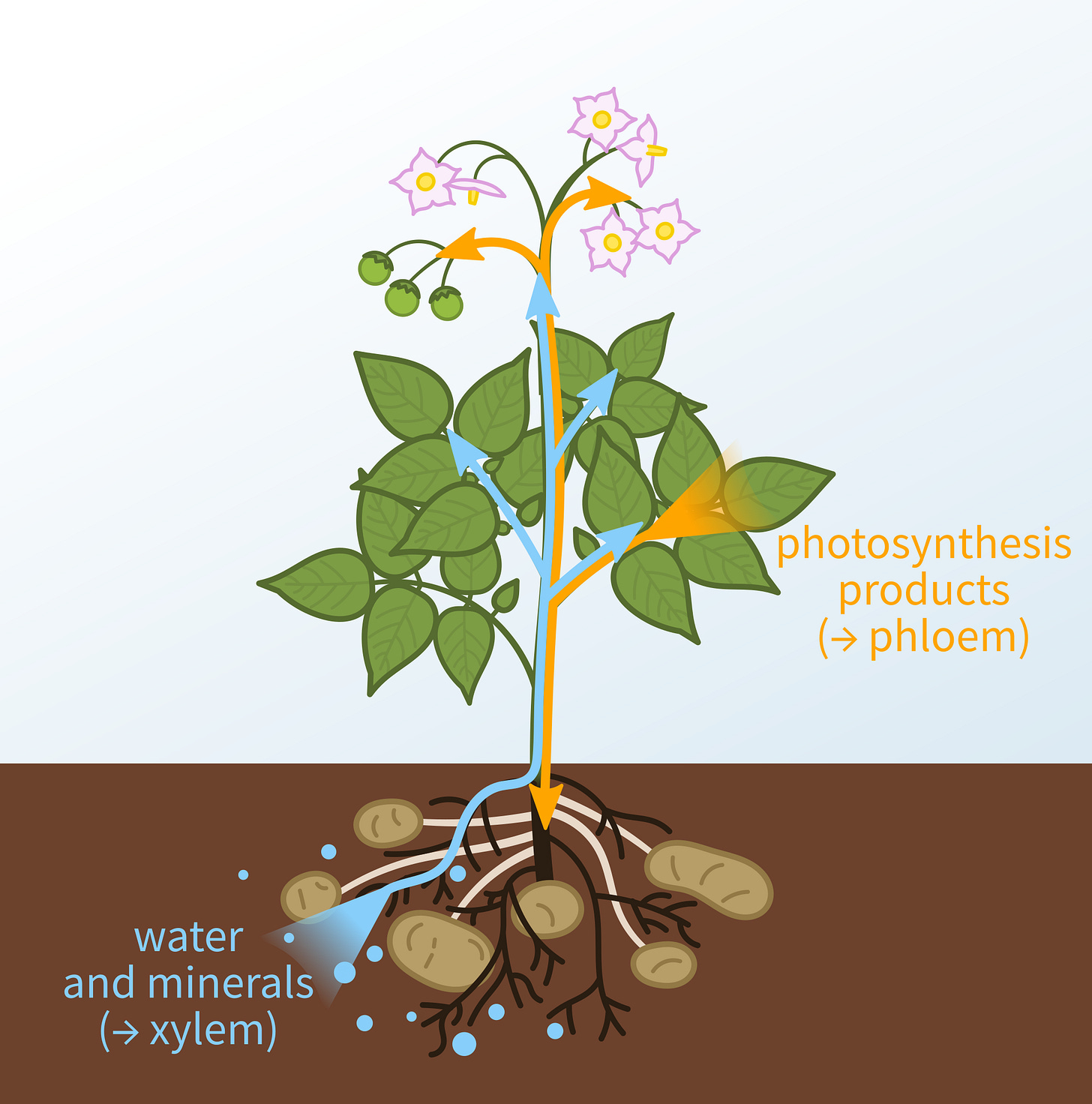

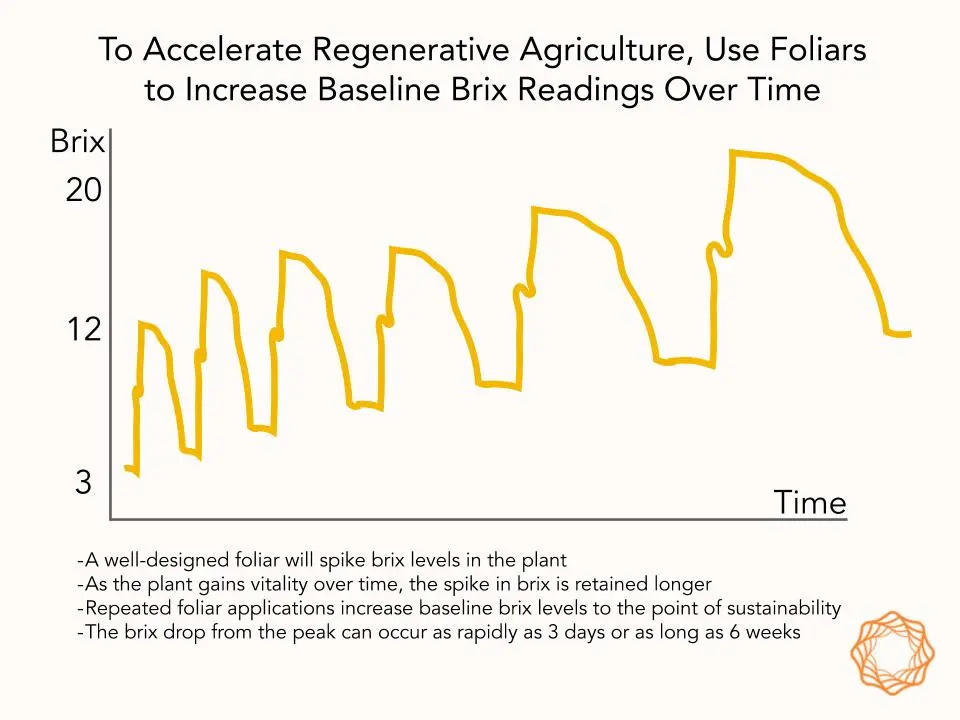



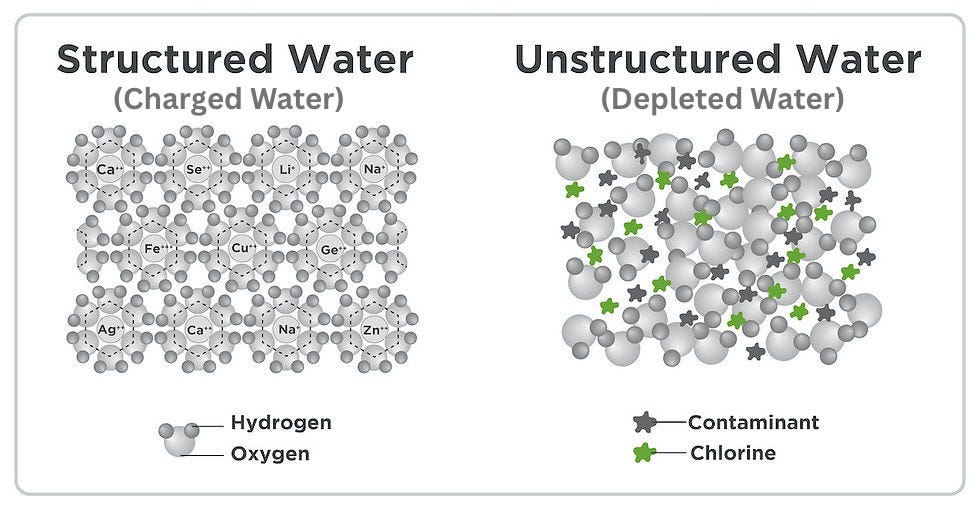
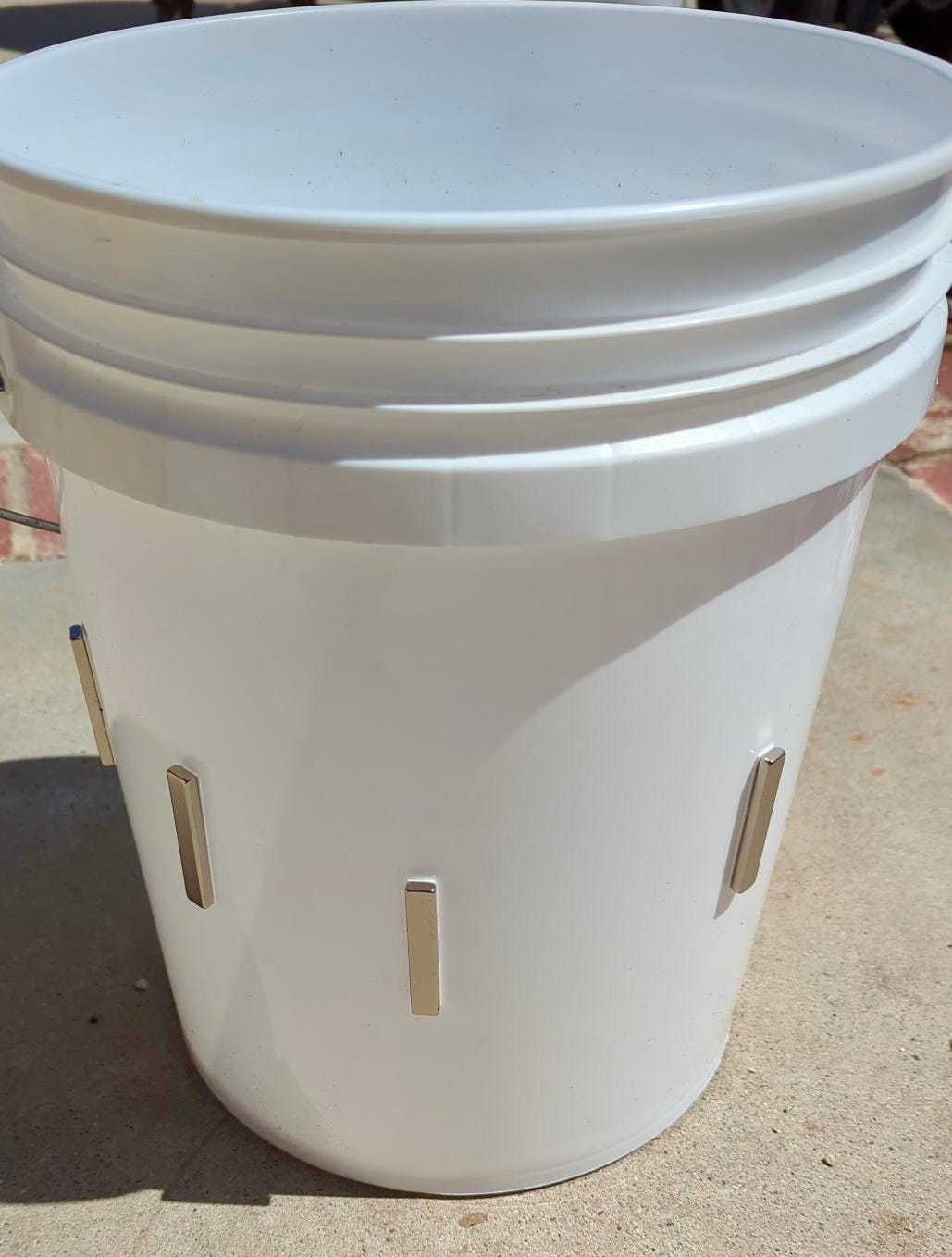

Your grasp on this subject is impressive. As the old saying goes…
“You do not really understand something unless you can explain it to your grandmother.”
― Albert Einstein
The way you encapsulated that was enjoyable to read.